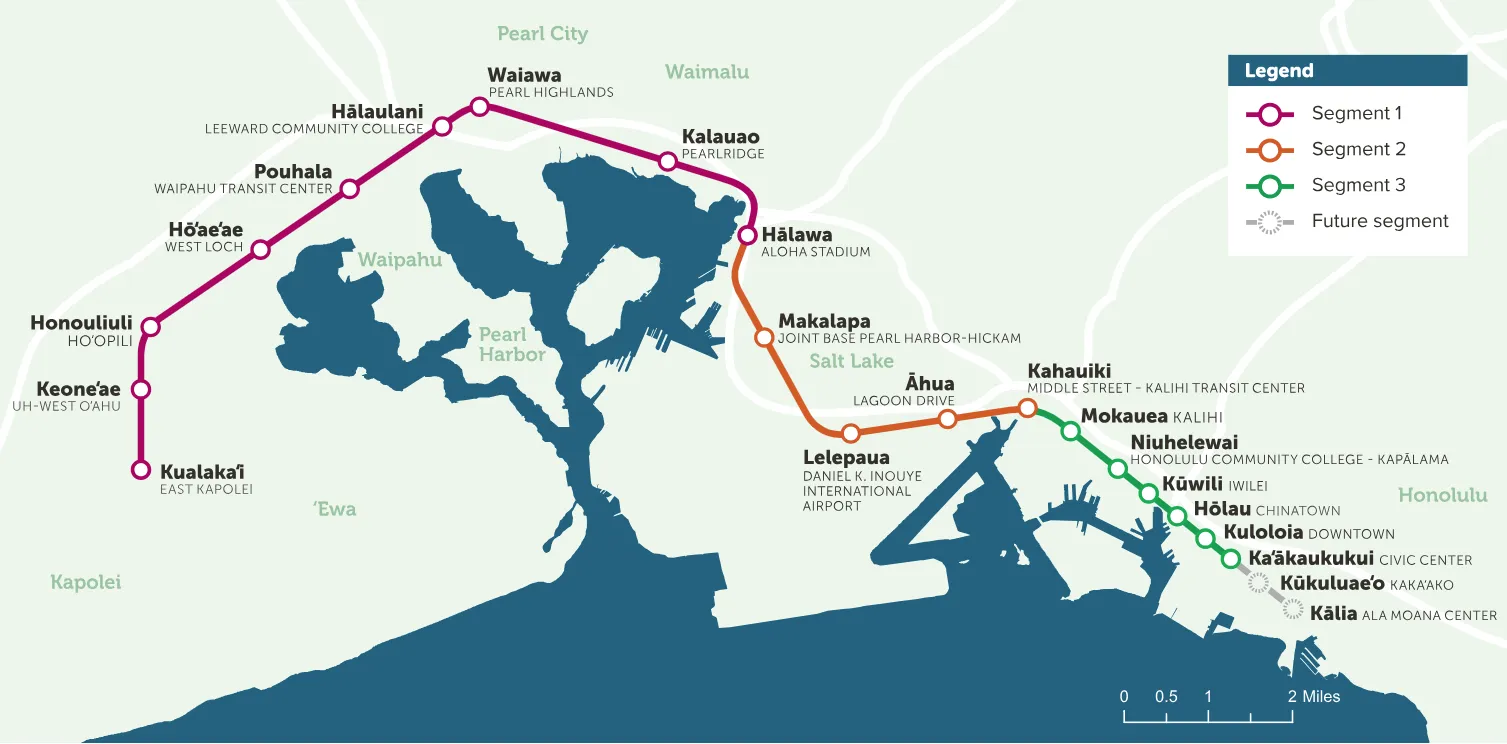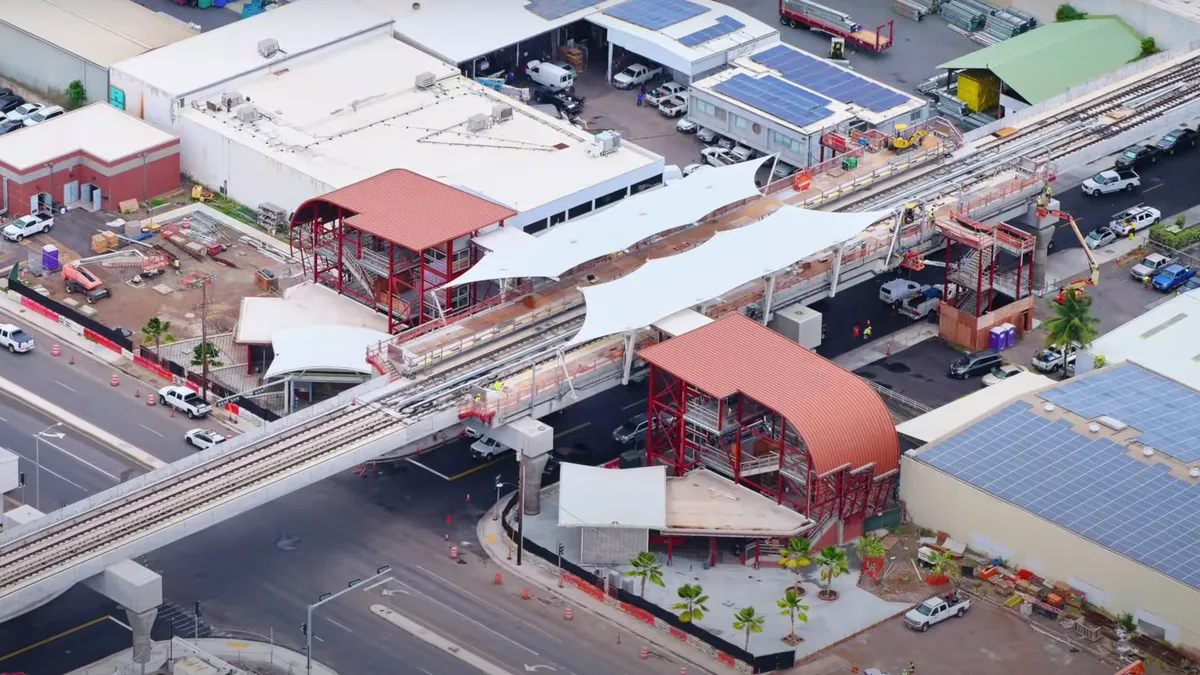Honolulu has something extra to celebrate this Fourth of July weekend: The first segment of its long-awaited $9.9 billion rail transit project will open to passengers starting Friday, per the Honolulu Authority for Rapid Transportation.
Phase 1 includes nearly 11 miles of guideway, a rail operations center and nine stations from Kualaka`i East Kapolei to Hālawa Aloha Stadium.
Tokyo-based Hitachi Rail Honolulu JV was tapped to design, build, operate and maintain the rail’s core systems for the first phase of the project, which broke ground in 2011. It will build more tracks and stations east of the current stations in phases in coming years.
The rail project has been beset by delays and cost hikes. Its original 2020 full open date has now been extended to 2031, and the price tag jumped so much from the original $3 billion estimate that HART had to do six recovery plans with the Federal Transit Administration to explain how it would finish the project with forecasted available funding.
The most recent 2022 recovery plan forced the agency to cut the Kakaʻako and Ala Moana Center stations, which decreased projected ridership by 16%. That decision hurts intermodal connectivity as well: Nearly 1,500 buses travel through the Ala Moana Transit Center daily, per HART’s website.
The project aims to create driverless, high-capacity light rail to ease travel in the heavily congested east-west corridor of the city, according to HART. Under the most recent plan, the line will extend 18.9 miles with 19 stations, down from 20 miles with 21 stations, though HART has said it wants to see the full plan completed eventually.

Financial troubles
Honolulu’s rail remains one of the most expensive transportation efforts in the U.S., the New York Times reported. Two key sources of project revenue — local general excise taxes and hotel taxes — took a hit when COVID-19 decimated the tourism industry. Another major factor in the ballooning costs was the decision to elevate the light rail to not disrupt car traffic.
“The second [that] you've got to maintain all the capacity for the vehicles, and you have to elevate the light rail, you've made a much harder to deliver and more expensive project,” said Beth Osborne, director of Transportation for America. “That was a decision made quite early on.”
With an approved recovery plan, HART is on its way to receiving $125 million of the $744 million the FTA is withholding as part of a full funding grant agreement amendment. Another $250 million will be held until the contract for the City Center guideways and stations is awarded, per a September letter from FTA to HART.
HART is now looking at ways to address its roughly $3 billion shortfall to build the two stations it cut. Options include internal cost reductions, handling construction more efficiently and seeking new funding. HART declined by email to comment in more detail and referred Construction Dive to its monthly project reports and other public documents.
What makes a project successful?
In general, U.S. rail builds take longer to complete and cost 50% more on average than they do in Europe and Canada, according to an analysis by the Eno Center for Transportation. That’s because U.S. public transit agencies rarely have the structure, authority or experience to deliver a major transit construction project, and labor costs are higher due to health care, the report showed.
“If you look at the countries that do a great job at delivering transit projects, the same agency builds a lot of transit and gets good at it,” Osborne said. “So long as we make an agency like HART just build the one thing, one time, and build it in a way that does not really interfere with vehicle movement, we are going to make this process difficult to master.”
Osborne said that measuring success of large transportation projects like the Honolulu rail should be more nuanced than just looking at budgets and timelines.
“If a project is difficult to build and over budget, but transformative to the people who use it, was that a failure?” Osborne asked. “And if a project was on time and under budget, but it's not useful to anybody, is that a success?”
Looking ahead
The project’s second phase consists of four stations over 5.2 miles from the Aloha Stadium to Middle Street-Kalihi Transit Center, and it should be complete in mid-2025. Track work is done and station construction is set to wrap in the fourth quarter of 2023, per HART’s website. A Shimmick/Traylor/Granite JV is the contractor for this phase.
Phase 3 will deliver another six stations by 2031. This portion entails the relocation of City Center utilities, everything from storm drainage and sewer facilities to other roadway improvements, to make way for the rail guideways. HART estimates the design-build contract for the guideway and stations will be awarded by April 2024.




















